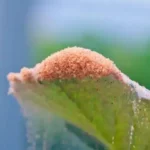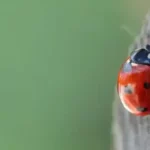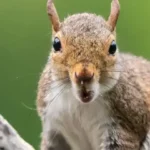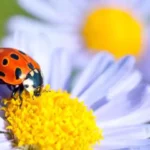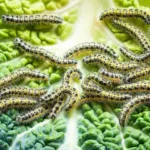Have you ever walked out to your garden, hopeful to see your plants thriving, only to find them under attack by those pesky leafhoppers? Witnessing your hard work being damaged by these tiny insects can be frustrating and disheartening. If you’re feeling overwhelmed, searching for solutions, and wondering how do you get rid of leafhoppers, you’re in the right place.
To get rid of leafhoppers in your garden, you can try several methods:
- Physical Removal: Use a handheld vacuum to suck up leafhoppers from affected plants or shake them off into a container of soapy water.
- Spray With Insecticidal Soap: Insecticidal soap can be effective in controlling leafhoppers. Spray affected plants thoroughly, focusing on the undersides of leaves where leafhoppers tend to feed.
- Neem Oil: Neem oil is a natural insecticide that can help control leafhoppers. Mix Neem oil with water according to the instructions on the label and spray it carefully on affected plants.
- Beneficial Insects: Introduce natural predators of leafhoppers, such as ladybugs, lacewings, or predatory wasps, to help control their populations.
- Reflective Mulch: Reflective mulches, such as aluminum foil or reflective plastic, can confuse leafhoppers and deter them from landing on plants.
- Remove Weeds: Leafhoppers often feed on weeds, so keeping your garden free of weeds can help reduce their numbers.
- Crop Rotation: Rotate crops each season to disrupt leafhoppers’ life cycles and reduce their populations in the garden.

As we delve deeper into strategies for removing leafhoppers, you’ll uncover a wealth of information that will empower you in your battle against these garden pests.
Understanding their life cycle and implementing proactive measures will equip you with the knowledge to defend your plants and promote a thriving garden. I’m here to provide practical tips and strategies to help you combat these tiny pests effectively to protect your beloved plants.
So, read on to discover how you can take control and create a pest-free environment!
Humble Highlights
- Discover how to identify leafhoppers in your garden BEFORE they start to wreak havoc on your garden plants so you can reclaim your turf while ensuring a healthier, more productive space!
- Save time with these natural and mechanical control options to curb swelling leafhopper numbers throughout your garden, INCLUDING these unique beneficial insects so you can improve productive yields and maintain an aesthetic appeal you’ll be proud of.
- Stop leafhopper infestations before they start with these 3 innovative tips that can help curb leafhoppers so you can reduce the chances of disease, viruses, and pathogens these tiny bugs can spread throughout your crops.
Identifying Leafhoppers In Your Garden
To identify leafhoppers in your garden, observe the slender, wedge-shaped insects sized from 1/8th to 1/4th of an inch. Look for green, yellow, and brown colors with mottled or streaked patterns. These agile creatures move swiftly, crawling sideways like a crab and leaping when disturbed.
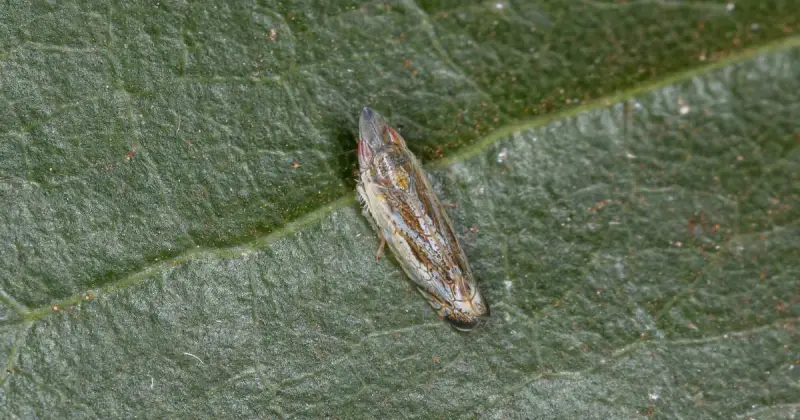
Female leafhoppers lay eggs daily on plants, particularly on the underside of leaves. Nymphs hatch from these eggs and undergo five molting stages before reaching adulthood. Common leafhopper species include the turfgrass leafhopper, beet leafhopper, potato leafhopper, two-spotted leafhopper, and blue-green sharpshooter.
Leafhoppers feed on plant sap by piercing foliage with their needle-like mouthparts, causing damage seen as stippling or yellowing of leaves. Use sticky traps near plants to catch these pests. 1
Regularly check the underside of leaves for eggs, nymphs, or adult leafhoppers to accurately assess the infestation level. Understanding leafhoppers’ appearance and behavior is crucial for effective pest management in your garden.
Natural Remedies For Leafhopper Control
To effectively address leafhoppers in your garden, consider natural remedies. Organic insecticidal soap and Neem oil spray have been proven to reduce leafhopper populations. Dusting plants with diatomaceous earth, a natural pest control, can also help decrease leafhopper numbers.
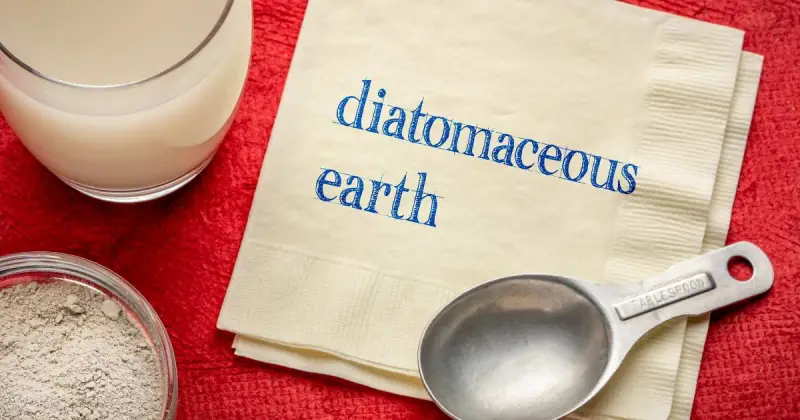
When applying these treatments, consider timing to protect beneficial insects like bees. Apply remedies when bees are less active to prevent harm. Act promptly if leafhopper numbers are high to avoid significant plant damage. 2
You should also avoid using diatomaceous earth on blooming plants to safeguard beneficial insects. Diatomaceous earth is a fine powder that can cling to pollinators’ bodies as they visit flowers, potentially harming or even killing them. To protect pollinators and other beneficial garden bugs, apply diatomaceous earth to non-blooming plants.
Integrating these natural remedies can manage leafhopper infestations while preserving a balanced garden ecosystem.
Leafhoppers are small, wedge-shaped insects that feed on plant sap, are often green or brown, and can be found in gardens, fields, and other vegetation-rich areas. You don’t want them lurking within your garden, where they will undoubtedly cause damage to plants by sucking sap from leaves, stems, and other plant parts. Check out the brief but informative video below that explains several effective natural and synthetic alternatives.
Using Beneficial Insects Against Leafhoppers
Use beneficial insects like ladybugs and lacewings in your garden to naturally control leafhoppers and maintain a balanced ecosystem. These insects are effective predators that target leafhoppers at various life cycle stages, helping to keep their populations in check.
Ladybugs are known for their voracious appetite and can consume up to 50 aphids daily, including leafhopper nymphs. Conversely, lacewings prey on leafhopper eggs and young nymphs, reducing future leafhopper numbers in your garden. 3
Introducing these beneficial insects is an environmentally friendly approach to managing leafhoppers without resorting to harmful chemicals.
Below is a summary of the vital role ladybugs and lacewings play in controlling leafhopper infestations:
| Beneficial Insects | Prey Targeted |
|---|---|
| Ladybugs | Leafhopper nymphs |
| Lacewings | Leafhopper eggs, nymphs |
Jumping spiders are also excellent predators of leafhoppers, which is why you should never eradicate them when you see them crawling in your garden. The humble jumping spider is a voracious predator that feeds on a variety of garden pests.
Additionally, jumping spiders promote biodiversity throughout your green space and are essential to the garden ecosystem. Their presence indicates a healthy and balanced ecosystem.
Implementing Mechanical Control Methods
To effectively control leafhoppers in your garden, implement mechanical methods, such as using a handheld vacuum to physically eliminate the pests from plants. Another mechanical control technique involves shaking plants over a white sheet to dislodge and identify these insects.
Installing sticky traps near your plants can help capture and manage leafhoppers. In cases of infestation, consider spraying a strong stream of water on plants to effectively remove the leafhoppers. Pruning is also an efficient mechanical control method as it entails removing heavily infested plant parts to decrease leafhopper populations. 4

Tips for Preventing Leafhopper Infestations
To prevent leafhopper infestations in your garden, maintain good garden hygiene by removing debris and weeds to eliminate potential overwintering sites for these pests. Rotate crops every 3 to 5 years to disrupt leafhopper activity and reduce infestations.
Here are some practical tips for preventing leafhopper infestations:
- Use Floating Row Covers: Floating row covers physically block leafhoppers and other garden pests from reaching your plants, providing a protective barrier.
- Plant Companion Plants: Choose companion plants that attract natural leafhopper predators, such as ladybugs and lacewings. These beneficial insects can help keep leafhopper populations in check by preying on them.
- Avoid Harmful Pesticides: Opt for natural control methods instead of pesticides that harm beneficial insects. Preserving these natural predators can effectively control leafhoppers while maintaining a healthy garden ecosystem. 5

Conclusion
Identifying leafhoppers in your garden and using natural remedies, beneficial insects, and mechanical control methods can effectively manage and control leafhopper infestations.
Acting promptly is essential to protecting plants, and prevention is critical to avoiding future infestations. As a backyard grower, you’ll want to watch for leafhoppers, as catching their swelling numbers quickly likely determines the fate of your seasonal plants.
Just as a gardener cares for their plants, it’s important to tend to your garden’s well-being to keep leafhoppers away. Stay vigilant and proactive in managing these pests to maintain a healthy garden environment.
Have you tried any of the abovementioned methods to fight back against leafhoppers effectively? You may have a successful alternative we didn’t discuss. Please drop us a line below and tell us what works for you to keep these tiny but destructive garden invaders at bay!
SOURCES
- Wikipedia – Leafhopper
- National Library Of Medicine, National Center For Biotechnology Information – The Control Of The American Leafhopper Erasmoneura Vulnerata (Fitch) In European Vineyards: Impact Of Synthetic And Natural Insecticides
- Oklahoma State University, Extension – Beneficial Insects
- Missouri Department Of Conservation – Leafhoppers
- ATTRA Sustainable Agriculture – Companion Planting & Botanical Pesticides: Concepts & Resources

